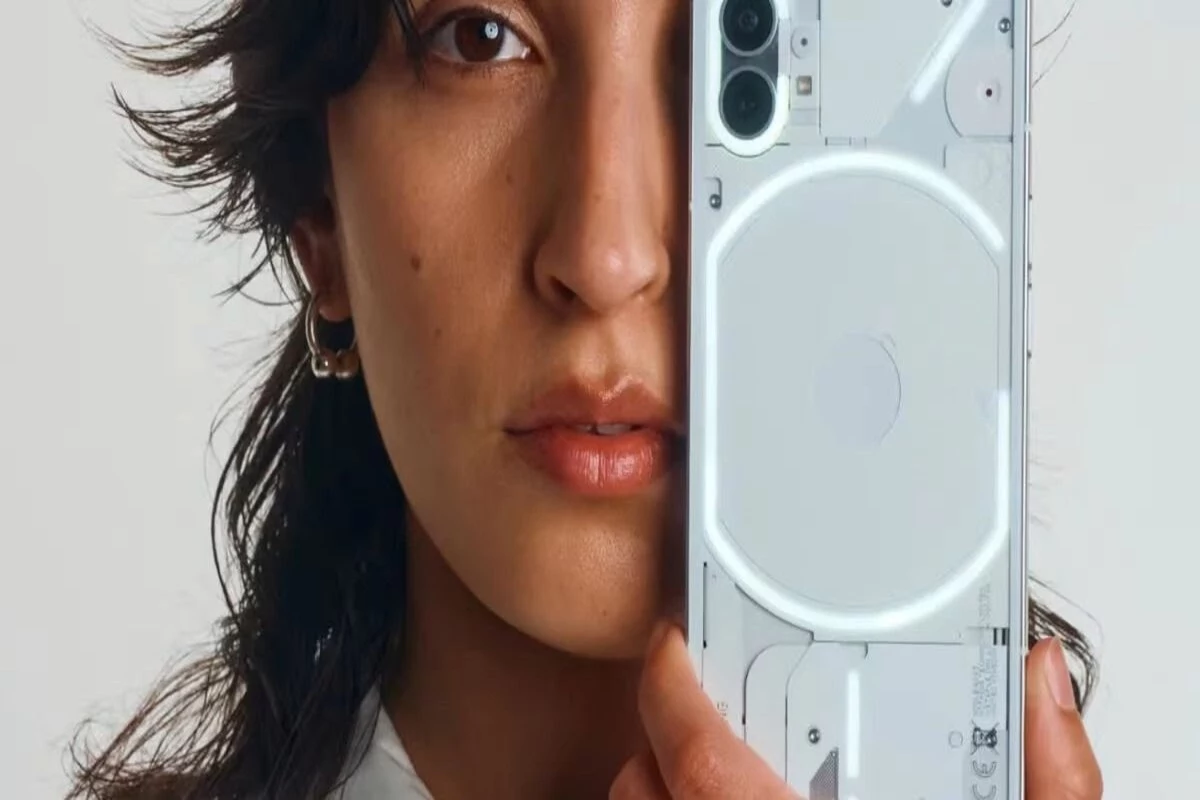Nothing Phone (1): Recently, Nothing Phone (1) made its debut worldwide, including in India. Recently, the device has drawn a lot of attention and momentarily outperformed iPhones. The company’s first smartphone was advertised using the same techniques as the launch campaign for the OnePlus One. The Nothing Phone (1), a mid-range smartphone at its core, steps out of OnePlus’ shadow and is being offered at a premium price with the assurance of a flawless experience. The phone is powered by the Qualcomm Snapdragon 778G+ SoC, and one of its highlights is Glyph, a collection of 900 LEDs that have been meticulously organised in certain patterns on the device’s back.
The phone also has two 50MP cameras on the back and a 6.55-inch Full HD+ OLED display with a 120Hz refresh rate and symmetrical bezels. Android 12 comes pre-installed on the device. All of this is powered by a good 4,500mAh battery. Nothing Phone (1) performed wonderfully in our review. In this essay, we’ll discuss four good reasons to purchase the Nothing Phone (1) as well as four bad ones.
4 Reasons to buy Nothing Phone (1)
Unique Design: Nothing has never placed a high premium on the design aesthetic that is generally used on products across industries. The business first unveiled their take on the Nothing Ear (1) and has since done the same for the Phone (1). You are given an aluminium and plastic-made phone. The body of the phone is shaped like an iPhone, with flat sides and a vertically arranged twin camera setup on the back. Nothing put a lot of effort into the back of the phone, giving you a clear phone and the Glyph user interface. On the front, there is a stunning OLED panel with a punch hole on one side and symmetrical bezels all around. The phone is available in two colours: Black and white, and neither is a bad choice.
Clean Software: The company’s Nothing OS v1.0.2 on top of Android 12 gives the Phone (1) a largely stock-like user interface. The OS is a special kind of customised skin that comes without bloatware. The business has made extremely subtle changes to the notification panel in addition to introducing distinctive fonts, wallpapers, and a few distinctive apps. In this situation, both the OS and the CPU are important, and this almost stock UI runs flawlessly on a mid-range chip to provide you a satisfying experience.
Good cameras: The Phone (1) has a dual 50MP sensor on the back, with the Sony IMX766 serving as the primary sensor and supporting both OIS and EIS. This sensor has good performance and is popular among OEMs for low- to mid-priced smartphones. The main sensor is supported by a 50MP Samsung JN1 sensor, which here performs the dual roles of ultra-wide and macro. The smartphone’s camera performance is respectable when compared to the competition at this pricing.
Outstanding Battery Life: The phone boasts a sizable 4,500mAh battery, which, although looking small on paper, performs like magic. During the brief time we used the phone, it regularly offered six or more hours of screen time, which is fantastic. The phone also boasts features completely unheard of at this pricing point, such as 15W wireless charging, and 5W reverse wireless charge, in addition to 33W wired fast charging. There may be concerns about the charging brick not being in the box, and we will address these concerns in the final section of this post.
Also Read: Cryptocurrency Update: Know Latest Update About Cryptocurrencies
4 Reasons Not To Buy Nothing Phone (1)
There were no in-box accessories: Unlike electronics giants Apple and Samsung, nothing eliminated the in-box accessories. This method can be justified on a flagship or low-cost smartphone, but it makes little sense to apply it to an already quality mid-range phone. The phone joins a market dominated by low-cost flagship competitors like the iQOO 9 SE, realme GT 2, GT Neo 3, OnePlus 10R (review), and Xiaomi 11T Pro, all of which are only a little bit more powerful than the Nothing Phone (1).
Low display brightness: The 10-bit 120Hz OLED panel of the Nothing Phone (1) is not of very high quality. The firm seems to have cut corners in several areas because the maximum brightness is only 500 nits. Despite the company’s claims that the HDR10+ certified display can reach 1200 nits while playing HDR content, no other app allows you to stream HDR video other from YouTube. In order to secure the certificates needed by Prime Video and Netflix to allow HDR streaming functionality, it appears that Nothing also cut corners.
Overall Value: The Phone (1) is obviously not for the general public, or at least not for the general public in India, despite all the pomp and glitz surrounding it. The phone is meant for the customer who wants something special but is prepared to spend more money for a comprehensive experience. The phone’s performance is poor and it is simple to write it off when compared to devices like the POCO F4, iQOO Neo 6, or even the IQOO 9 SE, but it shines in other important areas. In conclusion, those who prioritise a phone’s software and design above all else should strongly consider buying the Phone (1).
Issues with quality control: This has just come to light online as soon as the first shipments of retail devices started to reach their customers. Dead pixel occurrences, a display that is uneven with obvious colour shift and black crush, and moisture seepage despite the phone’s IP53 protection are all indications that the firm does not have sufficient quality control methods in place. In this instance, the tactic of faking scarcity to raise demand is also failing.
Also Read – Stock Market Update Today: Today’s Top Gainers
Keep watching our YouTube Channel ‘DNP INDIA’. Also, please subscribe and follow us on FACEBOOK, INSTAGRAM, and TWITTER.
